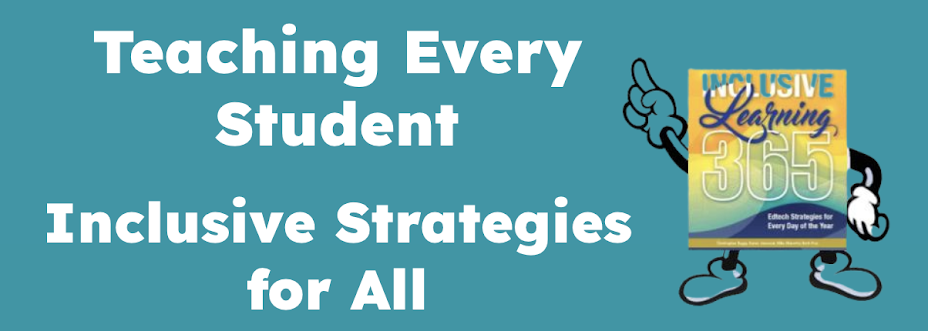
It's the weekend - time to catch up and take advantage of the opportunity to review what's in my reader. So many treasures to share with you, in no particular order!
1. Do you work with students who may benefit from speech recognition software? This topic frequently pops up in IEP team discussions about students with written expression issues. Who are the ideal candidates? What are the necessary prerequisite skills? Use the Custom Typing comprehensive online form to guide your decision about the effectiveness of speech recognition for a student. (Explore their resources under the Special Needs tab for a wealth of additional information).
2. Facilitating Online Class Discussions: the Why and the How - Many struggling students fear participating in class discussions for a variety of reasons. Will they give the "right" answer? Do they have enough time to formulate a verbal response? Will they humiliate themselves in front of their peers? (My son told me he prayed his entire sophomore year that his English teacher would never call on him. Guess what? She never did, and he lost the opportunity to contribute to class discussions for one full year. Wonder how much he actually learned that year, but that's another post). I'm resurrecting a blog post from Instructify (Teach Smarter not Harder) called How to Stimulate Class Discussion Using Discussion Forums. He describes two key advantages and the process for promoting worthwhile discussions.
Read the rest of the post - it's excellent and details an alternative method to support struggling learners.Tired of blank faces when you ask the class for their thoughts on Tom Sawyer? How about when you ask if there are any questions about the long division lesson, not a single student raises a hand? You can hardly get kids to pipe down when the morning bell rings, but ask the class a direct question and the first thing you hear is an awkward pause.
In-class discussion is an art, and you’ll probably spend most of your teaching career wondering how to keep kids engaged. Fortunately, in this age of the interweb, you can take advantage of online discussion forums to get the dialogue flowing.
3. Searching for a comprehensive resource for Project-Based Learning (PBL)? Your search has ended - chec
 k out PBL Online.
k out PBL Online.You'll find all the resources you need to design and manage high quality projects for middle and high school students. You can learn how to Design your Project. Plan rigorous and relevant standards-focused projects that engage students in authentic learning activities, teach 21st century skills, and demand demonstration of mastery.
4. Finally, thanks to Kevin Jarrett who I continually lear
 n from, here is another powerful, free educational resource. Gcompris offers a high quality interactive educational software suite for students who are developmental ages two to ten. There are different levels for a variety of activities including keyboard and mouse navigation (great for those new to the computer), reading practice, strategy games such as Connect 4, math activities, telling time, tangram puzzles, create animations, even chat with your friends in a safe environment. All the activities are listed here with a screen shot and description of each.
n from, here is another powerful, free educational resource. Gcompris offers a high quality interactive educational software suite for students who are developmental ages two to ten. There are different levels for a variety of activities including keyboard and mouse navigation (great for those new to the computer), reading practice, strategy games such as Connect 4, math activities, telling time, tangram puzzles, create animations, even chat with your friends in a safe environment. All the activities are listed here with a screen shot and description of each. You can use it in full-screen mode with your Interactive Whiteboard or Touch Screen computer. In the free version, you have access to 46 of the 108 activities. The user interface is visually pleasing and easy to use. Surprisingly, it also includes an Administration Module which allows you to collect data on each student. (how awesome is that for when we need to compile objective data!)
This software is distributed under the GNU GPL V3 License and works with GNU/Linux, MacOSX, Windows and other Unix versions.
Graphic attribution: http://www.leehansen.com/clipart/Themes/Pirates/images/treasure-chest.gif
